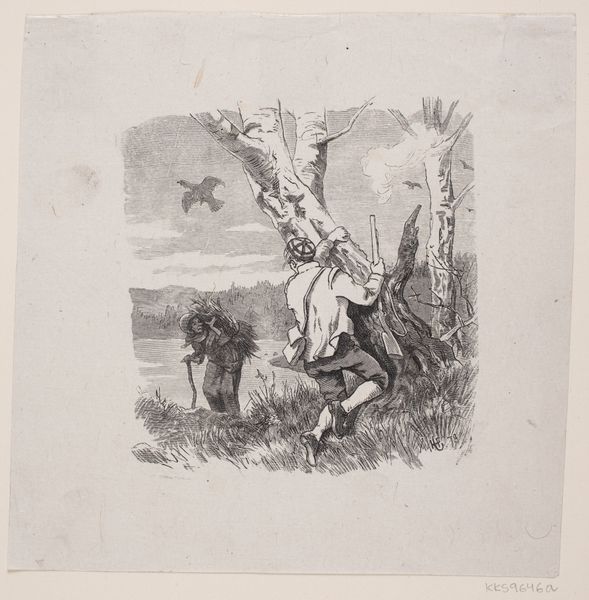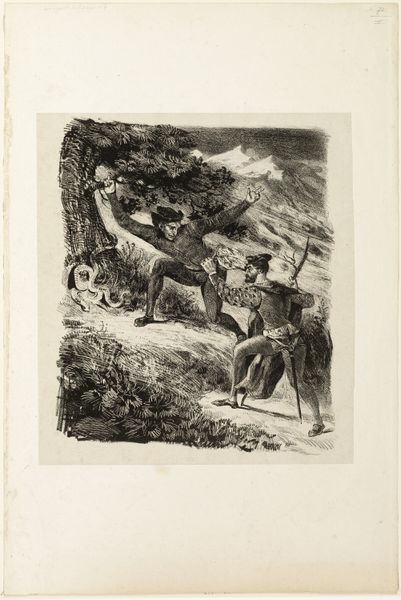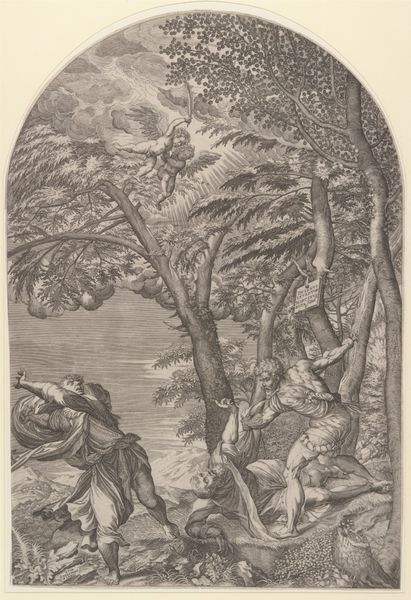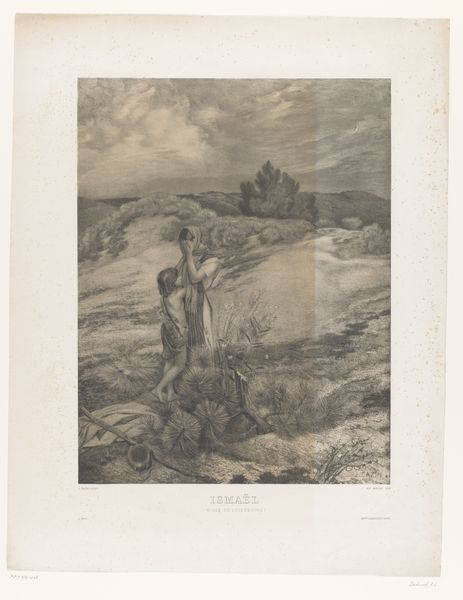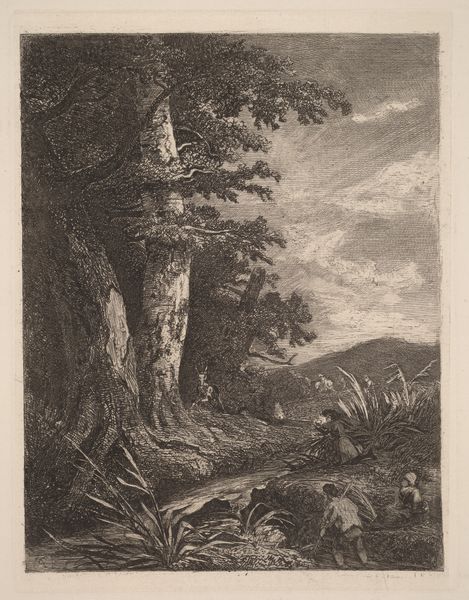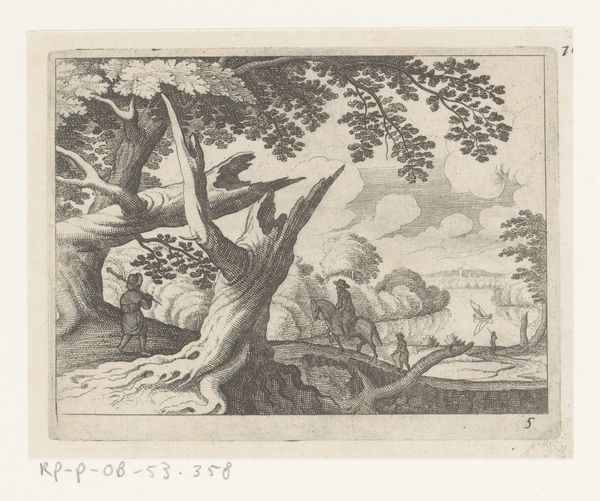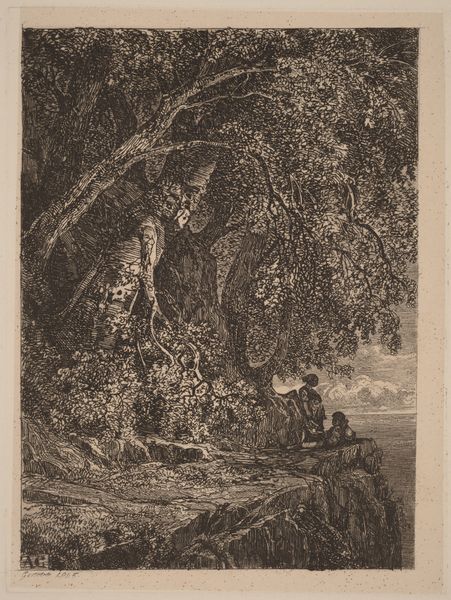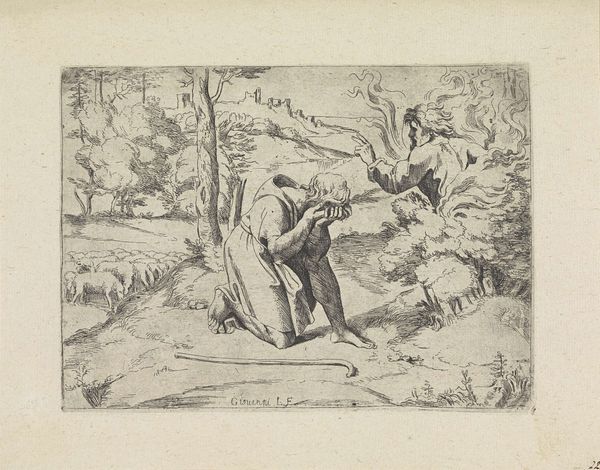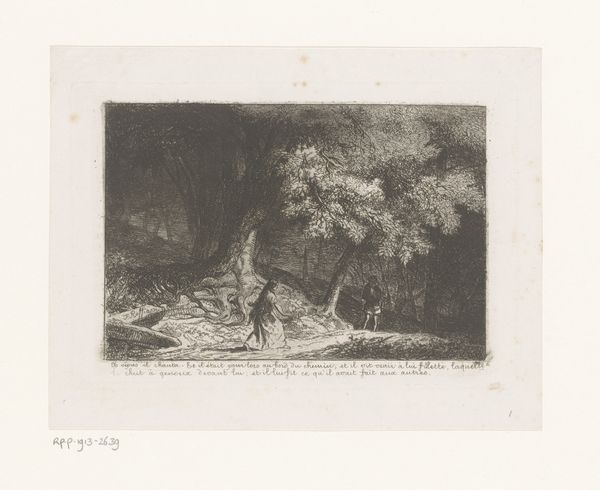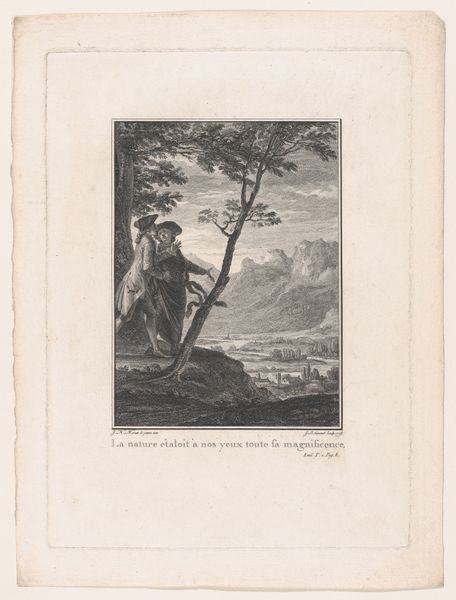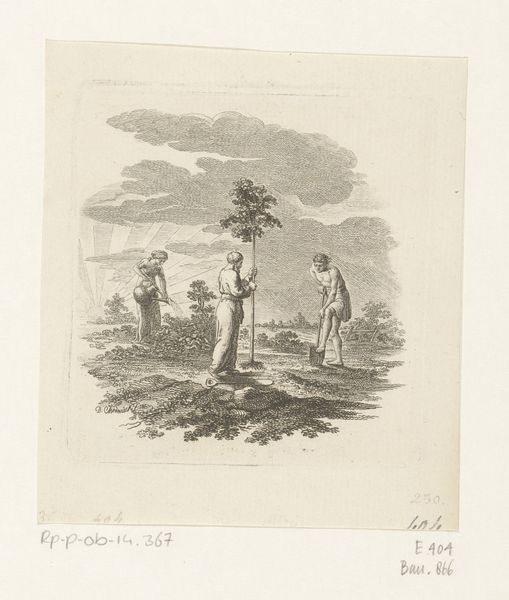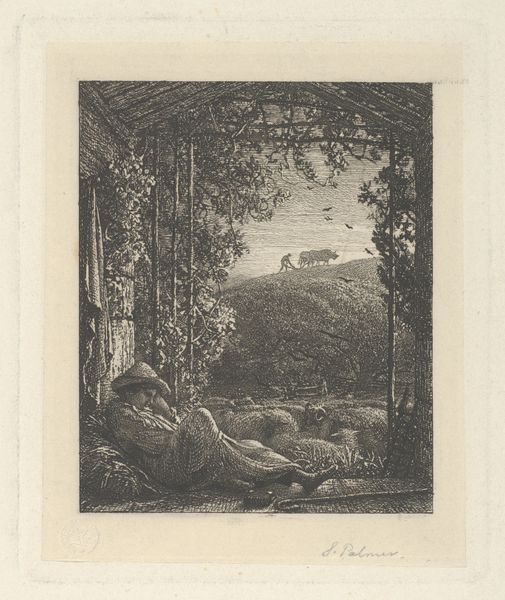
Copyright: National Gallery of Art: CC0 1.0
Emmanuel Phelippes-Beaulieu created "The Tourist" in 1858 using etching, a printmaking technique involving metal plates. Look closely, and you'll notice the density of fine lines which create the image. The artist would have applied a protective wax coating to the plate, then scratched away lines with a sharp needle, exposing the metal. Immersed in acid, the exposed lines are eaten away, creating grooves that hold ink. The plate is then wiped clean, and the ink is transferred to paper under great pressure. In the mid-19th century, reproducible images like this played a critical role in shaping popular culture. The relative ease of the etching technique democratized image-making, expanding it beyond the realm of painting, and allowing artists to reach larger audiences. As we consider the tourist in this image, remember also that the very concept of leisure travel was also becoming more available to the middle class. Ultimately, understanding the process and materials of "The Tourist" invites us to consider how art and leisure are intertwined, and how both are shaped by technological advancements and social change.
Comments
No comments
Be the first to comment and join the conversation on the ultimate creative platform.
